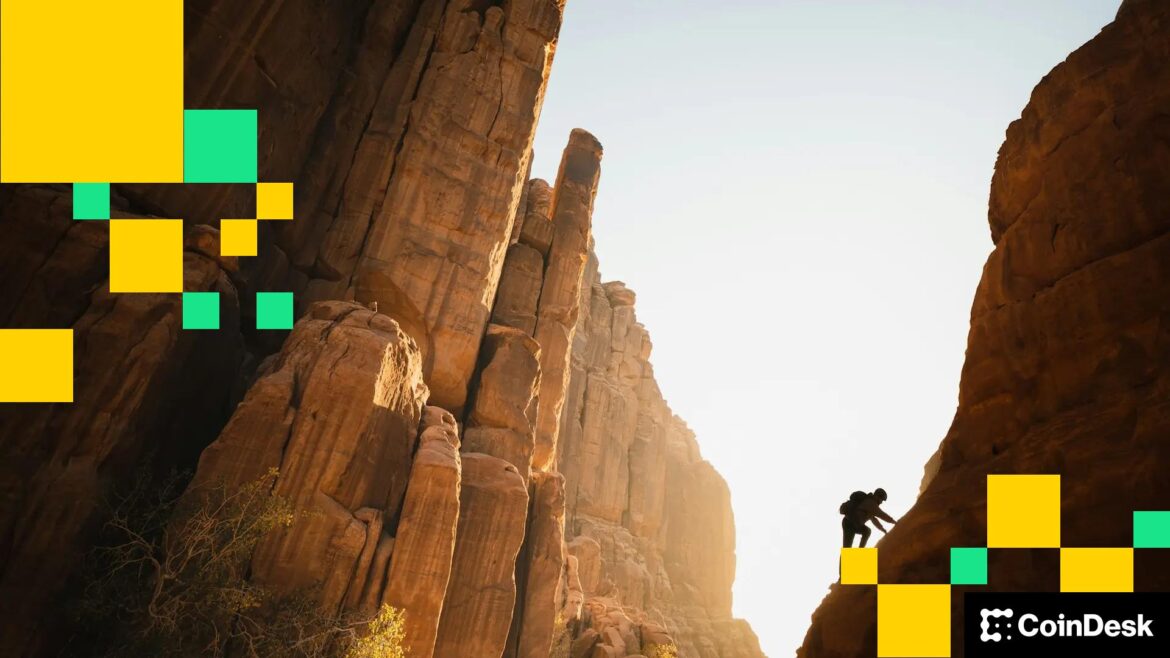Analysts told CoinDesk early this week that major cryptocurrencies led by bitcoin would resume their slow grind higher following Wednesday’s Fed rate cut.
That’s exactly what has happened since the Fed cut rates by 25 basis points to 4% late Wednesday. The central bank also hinted rapid easing in the next 12 months.
Bitcoin , the leading cryptocurrency by market value, topped $117,900, the highest level since Aug. 17, ending the sideways trend since Friday and resuming the slow recovery from early September lows near $107,200, CoinDesk data show. As of writing, the cryptocurrency was up nearly 1% on a 24-hour basis.
Ethereum’s ether (ETH) token, the second-largest cryptocurrency by market value, was up 2.7%, but remained locked within the four-week-long narrowing price range, or contracting triangle, as noted by CoinDesk early this week.
Other majors such as dogecoin , solana and BNB (BNB) were up over 4% while the payments-focused cryptocurrency XRP traded nearly 3% higher, looking to build upside momentum in the wake of a bullish descending triangle breakout.
Programmable blockchain Solana’s SOL token briefly topped $245, almost testing the weekend high, as CME’s decision to offer SOL options from Oct. 13 raised hopes of increased institutional participation. These options will help institutions manage their exposure more effectively. The CME is also going to debut XRP options on the same day.
Matt Mena, crypto research strategist at 21Shares, said that the Fed’s openness to accelerate the pace of easing is creating an asymmetric setup for bitcoin.
“The dots [interest rate projections] leaned more dovish, signaling the Fed is open to accelerating the pace of easing if conditions demand it. That repricing risk is now front and center – creating an asymmetric setup for Bitcoin. While today’s 25bps cut provided the spark, it is the path implied by the dots – more than the cut itself – that may set the stage for Bitcoin to challenge new highs into year-end,” Mena said in an email to CoinDesk.
He added that bitcoin could set an all-time high above $124,000 by the end of October, with ether topping the $5,000 psychological barrier.
Dollar resilience could be a potential headwind
The path to new lifetime highs, however, may not be smooth, as the dollar is showing signs of life.
Despite the dovish Fed rate projections, the dollar index, which tracks the greenback’s value against major currencies, including the euro, has bounced to 97.30, quickly recovering from the initial drop below the July 1 low of 96.37.
Perhaps the Fed’s dovishness is already factored in by the foreign exchange markets. After all, the DXY has dropped 10% this year largely on the back of Fed rate cut bets. BTC, too, has rallied by 25% this year, hitting new highs above $124,000 in August, supported by dovish Fed expectations.
Dollar Index’s (DXY) daily chart. (TradingView/CoinDesk)
The dollar’s resilience likely reflects Chairman Jerome Powell’s emphasis that rapid, successive rate cuts are not guaranteed. He also highlighted that quantitative tightening (balance sheet runoff) remains in effect and inflation continues to run high. These remarks dampened the optimism sparked by the dovish dot plot projections.
A strong bounce in the DXY could lead to financial tightening, potentially weighing on BTC and other risk assets.
Tail risk pricing
Sophisticated market participants are pricing tail risk, according to crypto financial platform BloFin.
Tail risk refers to low-probability, high-impact events, such as market crashes or major economic crises, that cause disproportionately large losses, often occurring at the “tails” of a probability distribution.
“As one of the most interest rate-sensitive assets, the recent increase in interest rate risk has led to a growing demand for tail protection, prompting market makers and traders to incorporate more interest rate risk into their pricing. Meanwhile, block trades data also includes a short-dated (about 4DTE) put spread order with 2,000 contracts (clearly intended for tail protection), which is not often seen,” BloFin told CoinDesk.
A put spread is a strategy designed to profit from a decline in the price of the underlying asset, in this case, BTC.

